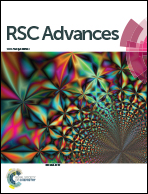Investigations on permeation of water vapor through synthesized nanoporous zeolite membranes; a mass transfer model
Abstract
Permeation of water vapor and methane through synthesized nanoporous zeolite membranes was studied in this work. The separation performance of synthesized zeolite membranes was evaluated against single permeation of water vapor and methane. The effect of temperature on permeation of both gases was investigated. The results showed that increasing temperature enhances the permeations and ideal selectivities, while an ideal selectivity for vapor/methane as high as 18 was obtained at a temperature of 343 K. Flux of vapor permeation was found to increase more than that for methane over a wide range of temperatures. A mass transfer model was developed to describe the permeation of water vapor through the synthesized membrane. The model was based on the Maxwell–Stefan approach which considers both adsorption and diffusion of vapor in the zeolite pores. The adsorption behavior of the zeolite membrane was described by the Unilan model. The model findings were validated through comparing with experimental data and showed good agreement at higher temperatures. Moreover, flux of vapor transfer showed a strong dependency on the permeate pressure in which the mass transfer flux decreases from 0.04 mol m−2 s−1 to almost zero when the permeate pressure increases from 100 Pa to 100 kPa.


 Please wait while we load your content...
Please wait while we load your content...